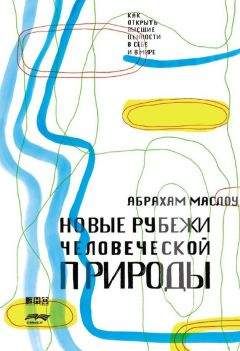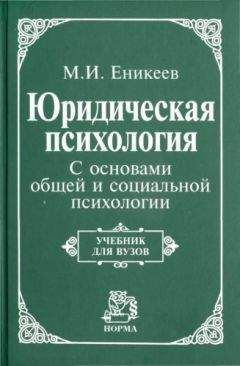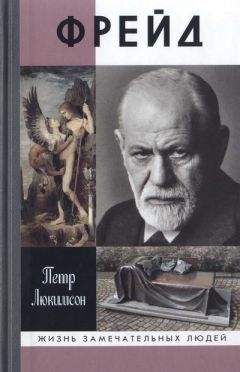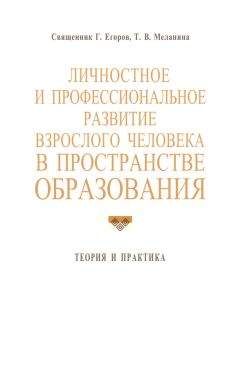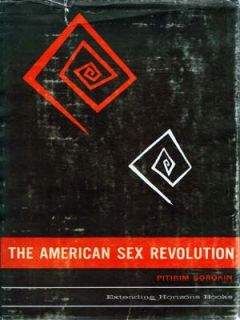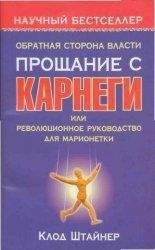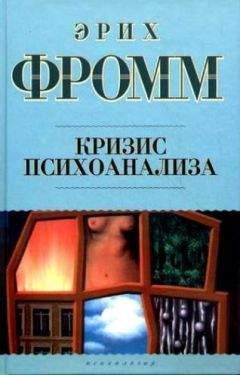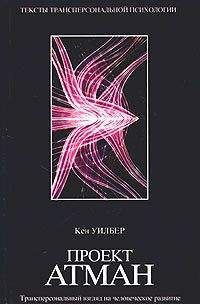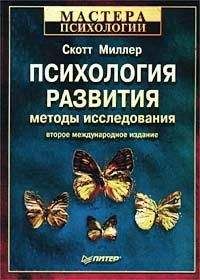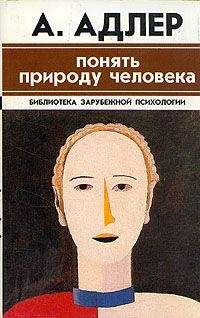Марк Хаузер - Мораль и разум. Как природа создавала наше универсальное чувство добра и зла
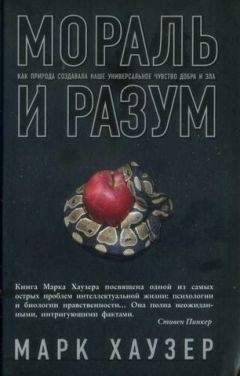
Скачивание начинается... Если скачивание не началось автоматически, пожалуйста нажмите на эту ссылку.
Жалоба
Напишите нам, и мы в срочном порядке примем меры.
Описание книги "Мораль и разум. Как природа создавала наше универсальное чувство добра и зла"
Описание и краткое содержание "Мораль и разум. Как природа создавала наше универсальное чувство добра и зла" читать бесплатно онлайн.
В книге известного американского ученого Марка Хаузера утверждается, что люди обладают врожденным моральным инстинктом, действующим независимо от их пола, образования и вероисповедания. Благодаря этому инстинкту, они могут быстро и неосознанно выносить суждения о добре и зле. Доказывая эту мысль, автор привлекает многочисленные материалы философии, лингвистики, психологии, экономики, социальной антропологии и приматологии, дает подробное объяснение природы человеческой морали, ее единства и источников вариативности, прослеживает пути ее развития и возможной эволюции. Книга имела большой научный и общественный резонанс в США и других странах. Перевод с английского Т. М. Марютиной Научный редактор перевода Ю. И. Александров
Kruska D. (1988). Mammalian domestication and its effect on brain structure and behavior // H. J. Jerison (Ed.), Intelligence and Evolutionary Biobgy (p. 211— 250). New York: Springer Verlag.
Kuhlmeier V, Wynn K. & Bloom P (2003). Attribution of dispositional states in 12-month-olds // Psychological Science, 14, 402—408.
Kuhn T (1970). The Structure of Scientific Revolutions. Chicago: University of Chicago Press.
Kulwicki A. D. (2002). The practice of honor crimes: a glimpse of domestic violence in the Arab world // Issues in Mental Health Nursing 23, 77—87.
Kummer Н. & Cords М. (1992). Cues of ownership in long-tailed macques, Macaca fascicularis // Animal Behaviour, 42, 529—549.
Kundera M. (1985). The Unbearable Lightness of Being. New York: Harper Collins.
Lakoff G. (1996). Moral Politics. Chicago: University of Chicago Press.
Lasriik H., Uriagereka J. & Boeckx C. (2005). A Course in Minimalist Syntax: Foundations and Prospects. Maiden, MA: Blackwell Publishers.
Leach H. M. (2003). Human domestication reconsidered // Current Anthropology, 44, 349—368.
LeDoux J. (1996). The Emotional Brain. New York: Simon and Schuster.
Lee K., Cameron C. A., Doucette J. & Talwar V. (2002). Phantoms and fabrications: young children’s detection of implausible lies // Child Development, 73, 1688— 1702.
Leibniz G. W. (1704/1966). New Essays on Human Understanding. Cambridge: Cambridge University Press.
Lerdahl F. & JackendoffR. (1996). A Generative Theory of Tonal Music. Cambridge, MA: MIT Press.
Leslie A. M. (1987). Pretense and representation: the origins of “theory of mind” // Psychological Review, 94, 412—426.
Leslie A. M. (1994). ToMM, ToBY, and Agency: core architecture and domain specificity // L. A. Hirschfeld & S. A. Gelman (Eds.), Mapping the Mind: Domain Specificity in Cognition and Culture (p. 119—148). Cambridge: Cambridge University Press.
Leslie A. M. (2000). Theory of mind as a mechanism of selective attention // M. Gazzaniga (Ed.), The New Cognitive Neurosciences (p. 1235—1247). Cambridge, MA: MIT Press.
Leslie A. M. & Keeble S. (1987). Do six-month-old infants perceive causality? // Cognition, 25, 265—288.
Leslie A. M., Knobe J. & Cohen A. (in press). Acting intentionally and the side-effect effect: ‘Theory of mind’ and moral judgment // Psychological Science, still in press.
Lewis M., Sulivan M. W. & Brooks-Gunn J. (1985). Emotional behavior during the learning of a contingency in early infancy // British Journal of Developmental Psychology, 3, 307—316.
Lewis R. J. (2002). Beyond dominance: the importance of leverage // Quarterly Review of Biology, 77, 149—164.
Lieberman D., Tooby J. & Cosmides L. (in press). Does morality have a biological basis? An empirical test of the factors governing moral sentiments relating to incest // Proceedings of the Royal Society, London, B, 270, 819—826.
Lieberman N. & Klahr Y. (1996). Hypothesis testing in Wason’s selection task: social exchange cheating detection or task understanding? 11 Cognition, 58, 127—156.
Litowitz D. (1997). The trouble with ‘scarlet letter’ punishments // Judicature, 81 (2), 52—57.
Mackie J. (1977). Ethics: inventing right and wrong. London: Penguin.
Macnamara J. (1990). The development of moral reasoning and the foundations of geometry // Journal for the Theory of Social Behavior, 21, 125—150.
Markus H. R. & Kitayama S. (1991). Culture and self: implications for cognition, emotion, and motivation // Psychological Review, 98, 224—253.
Marler Р.у Karakashian S. & Gyger М. (1991). Do animals have the option of withholding signals when communication is inappropriate? The audience effect // C. Ristau (Ed.), Cognitive ethology: the minds of other animals (p. 135— 186). Hillsdale, NJ: Lawrence Erlbaum Associates.
Marlowe F. (2004). Better to receive than to give: How the Hadzaplay the game. Unpublished manuscript, Cambridge, MA.
Martau P.A. у Caine N. G. & Candland D. K. (1985). Reliability of the emotions profile index, primate form, with Papio hamadryas, Macaca fuscata, and two Saimiri species // Primates, 26, 501—505.
Mason G. J.y Cooper J. & Clarebrough C. (2001). Frustrations of fur-farmed mink // Nature, 410, 35—36.
Mason H. E. (1996). Moral Dilemmas and Moral Theory. New York: Oxford University Press.
May L.y Friedman M. & Clark A. (1996). Minds and Morals. Cambridge, MA: MIT Press.
Mayell H. (2002). Thousands of women killed for family “honor”. Available: http://news.nationalgeographic.com/news/2002/02/0212_02 0212_honorkilling.html.
Mazur J. E. (1987). An adjusting procedure for studying delayed reinforcement // M. E. Commons & J. E. Mazur & J. A. Nevin & H. Rachlin (Eds.), Quantitative Analyses of Behavior (p. 55—73). Hillsdale NJ: Lawrence Erlbaum Associates.
McAlpine L. M. & Moore C. L. (1995). The development of social understanding in children with visual impairments //Journal of Visual Impairment and Blindness, 89, 349—358.
McCabe K. A., Houser D.y Ryan L.y Smith V. L. & Trouard T. (2001). A functional imaging study of cooperation in two-person reciprocal exchange // Proceedings of the National Academy of Sciences, USA, 98у 11832—11835.
McCleam G. E. (1997). Substantial genetic influence on cognitive abilities in twins 80 or more years old // Science, 276, 1560—1563.
McGrew W. C. & Feistner A. T. C. (1992). Two nonhuman primate models for the evolution of human food sharing: chimpanzees and callitrichids //J. H. Barkow & L. Cosmides & J. Tooby (Eds.), The Adapted Mind (p. 229—249). New York: Oxford University Press.
Mead G. H. (1912). The mechanism of social consciousness //Journal of Philosophy, Psychology, and Scientific Methods, 9, 401—416.
Mehlman P. T.y Higley J. D., Faucher l.y Lilly A. A., Taub D. M.y Vickers/., Suomi S. J. & Linnoila M. (1994). Low CSF 5-HIAA concentrations and severe aggression and impaired impulse control in nonhuman primates // American Journal of Psychiatry, 151, 1485—1491.
Mehlman P. T, Higley J. D., Faucher /., Lilly A. A., Taub D. M.y Vickers Suomi S. J. & Linnoila M. (1995). Correlation of CSF 5-HIAA concentration with sociality and the timing of emigration in free-ranging primates // American Journal of Psychiatry, 152, 907—913.
Mele A. (2001). Acting intentionally: probing folk notions // B. F. Malle & L. J. Moses & D. Baldwin (Eds.), Intentions and Intentionality: Foundations of Social Cognition (p. 27—43). Cambridge, MA: MIT Press.
Mendres K. A. & de Waal F. В. M. (2000). Capuchins do cooperate: the advantage of an intuitive task // Animal Behaviour, 60, 523—529.
Metcalfe J. & Mischel W. (1999). A hot/cool-system analysis of delay of gratification: dynamics of willpower // Psychological Review, 106, 3—19.
Mikhail J. M. (2000). Rawls’ linguistic analogy: A study of the ‘generative grammar’ model of moral theory described by John Rawls in ‘A theory of justice’. Unpublished PhD, Cornell University, Ithaca, NY.
Mikhail J. M. (2002). Law, science, and morality: a review of Richard Posner’s “The Problematics of Moral and Legal Theory” // Stanford law Review, 54, 1057— 1127.
Mikhail J. M. (in press). Rawls’ linguistic Analogy. New York: Cambridge University Press.
Mikhail J. M.y Sorrentino C. & Spelke E. (2002). Aspects of the theory of moral cognition: Investigating intuitive knowledge of the prohibition of intentional battery, the rescue principle, the first principle of practical reason, and the principle of double effect. Unpublished manuscript, Stanford, CA.
Milgate D. E. (1998). The flame flickers, but burns on: modern judicial application of the ancient heat of passion defense // Rutgers Law Review, 57, 193—227.
Milgram S. (1974). Obedience to Authority: An experimental view. New York: Harper and Row Publishers.
Milinski M. (1981). Tit for tat and the evolution of cooperation in sticklebacks // Nature, 325, 433—437.
Milinski M.y Semmann D. & Kramheck H.-J. (2002). Reputation helps solve the ‘tragedy of the commons’ // Nature, 475, 424—426.
Miller D. & Walzer M. (1995). Pluralism, Justice and Equality. Oxford: Oxford University Press.
Mineka S.y Davidson M.y Cook M. & Keir R. (1984). Observational conditioning of snake fear in rhesus monkeys //Journal of Abnormal Psychology, 93, 355—372.
Mineka S.y Keir R. & Price V (1980). Fear of snakes in wild and laboratory reared rhesus monkeys (Macaca mulatto) // Animal Learning and Behavior, 8y 653— 663.
Minter M.y Hobson R. P. & Bishop M. (1998). Congenital visual impairment and ‘theory of mind’ // British Journal of Developmental Psychology, 76, 183—196.
Mischel W. (1966). Theory and research on the antecedents of self-imposed delay of reward // B. A. Maher (Ed.), Progress in Experimental Personality Research (p. 85—132). New York: Academic Press.
Mischel W. (1974). Processes in delay of gratification // L. Berkowitz (Ed.), Advances in Experimental Social Psychology, Vol. 7 (p. 249—292). New York: Academic Press.
Mischel W.y Skoda Y & Rodriguez M. L. (1989). Delay of gratification in children // Science, 244y 933—938.
Mischel W.y Zeiss R. & Zeiss A. (1974). Internal-external control and persistence: validation and implications of the Stanford preschool internal-external scale // Journal of Personality and Social Psychology, 29, 265—278.
Mock D. W. (2004). More Than Kin and Less Than Kind. Cambridge, MA: Harvard University Press.
Moliere J. B. P. (1673). Le Misanthrope. Oberon Books: London.
MollEslinger R J. & Oliviera-Souza R. (2001). Frontopolar and anterior temporal cortex activation in a moral judgment task: preliminary functional MRI results in normal subjects // Archives of Neuropsychiatry, 59, 657—664.
MollJ., Oliveira-Souza R. & Eslinger P. J. (2002). The neural correlates of moral sensitivity: a functional MRI investigation of basic and moral emotions //Journal of Neuroscience, 27, 2730—2736.
MollJ., Oliveira-Souza R., Moll F. T, Ignacio I. E., Caparelli-Daquer E. M. & Eslinger P. J. (2005). The moral affiliations of disgust. Working paper. Not yet published.
Moll J., Olivier-Souza R. & Bramati I. E. (2002). Functional networks in moral and non-moral social judgments // Neuro Image, 16, 696—703.
Moore C. & Macgillivray S. (2004). Altruism, prudence, and theory of mind in preschoolers // New Directions for Child and Adolescent Development, 103, 51— 62.
Moore G. E. (1903). Principia Ethica. Cambridge: Cambridge University Press.
Muller J. L., Sommer M., Wagner V, Lange К., Taschler H., Roder C. H., Schuierer G., Klein H. E. & Hajak G. (2003). Abnormalities in emotion processing within cortical and subcortical regions in criminal psychopaths: evidence from a functional magnetic resonance imaging study using pictures with emotional content // Biological Psychiatry, 54, 152—163.
Munn C. (1986). Birds that “cry wolf” // Nature, 319, 143—145.
Murnighan J. K. & Saxon M. S. (1998). Ultimatum bargaining by children and adults //Journal of Economic Psychology, 79, 415—445.
Nesse R. M. (Ed.). (2001). Evolution and the Capacity for Commitment. New York: Russell Sage Foundation.
Newport E. L. baAslin R. N. (2004). Learning at a distance. I. Statistical learning of non-adjacent dependencies // Cognitive Psychology, 48, 127—162.
Newtson D. (1973). Attribution and the unit of perception of ongoing behavior // Journal of Personality and Social Psychology, 28, 28—38.
Newtson D., Engquist G. & Bois J. (1977). The objective basis of behavior units // Journal of Personality and Social Psychology, 35, 847—862.
Подписывайтесь на наши страницы в социальных сетях.
Будьте в курсе последних книжных новинок, комментируйте, обсуждайте. Мы ждём Вас!
Похожие книги на "Мораль и разум. Как природа создавала наше универсальное чувство добра и зла"
Книги похожие на "Мораль и разум. Как природа создавала наше универсальное чувство добра и зла" читать онлайн или скачать бесплатно полные версии.
Мы рекомендуем Вам зарегистрироваться либо войти на сайт под своим именем.
Отзывы о "Марк Хаузер - Мораль и разум. Как природа создавала наше универсальное чувство добра и зла"
Отзывы читателей о книге "Мораль и разум. Как природа создавала наше универсальное чувство добра и зла", комментарии и мнения людей о произведении.





